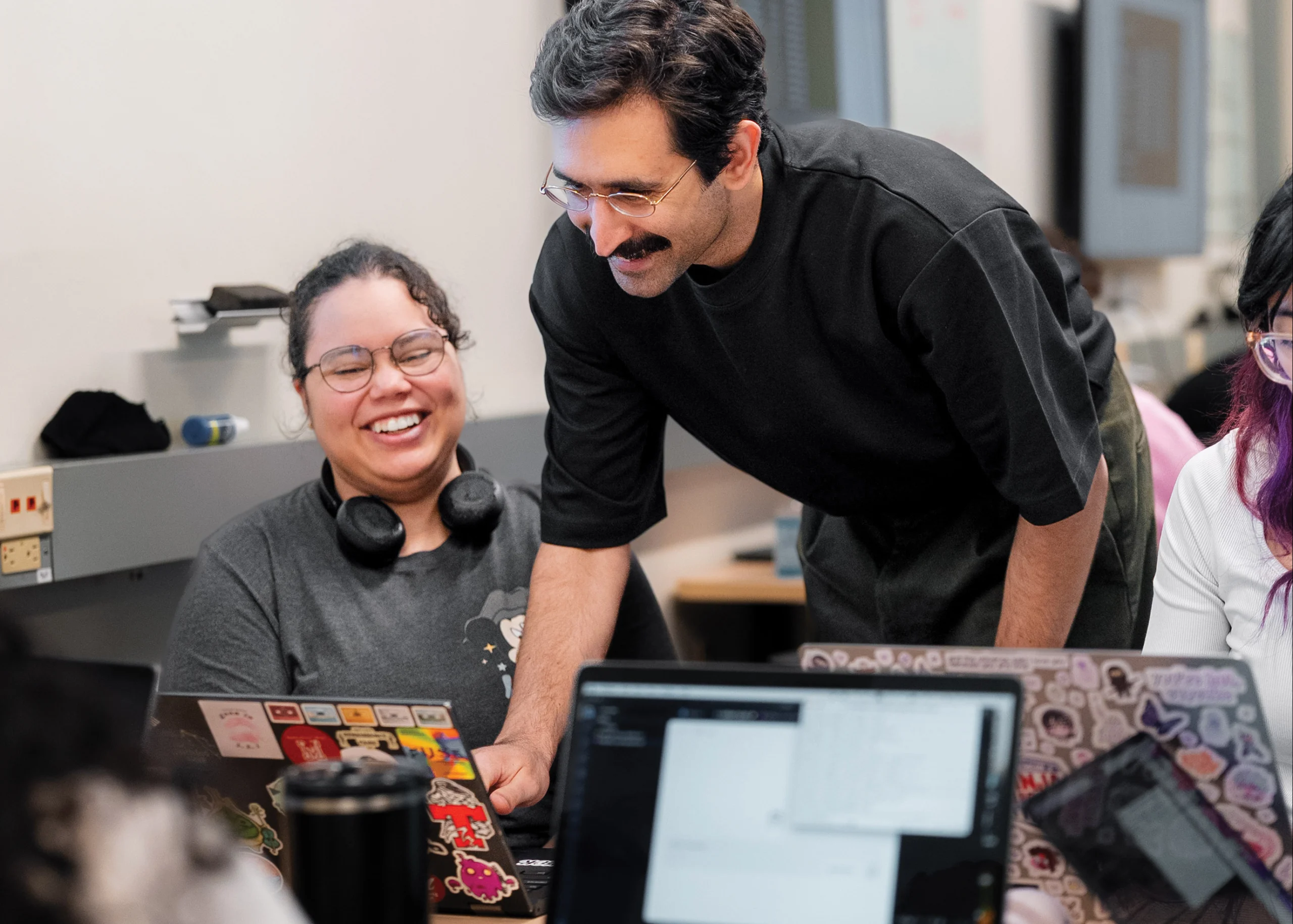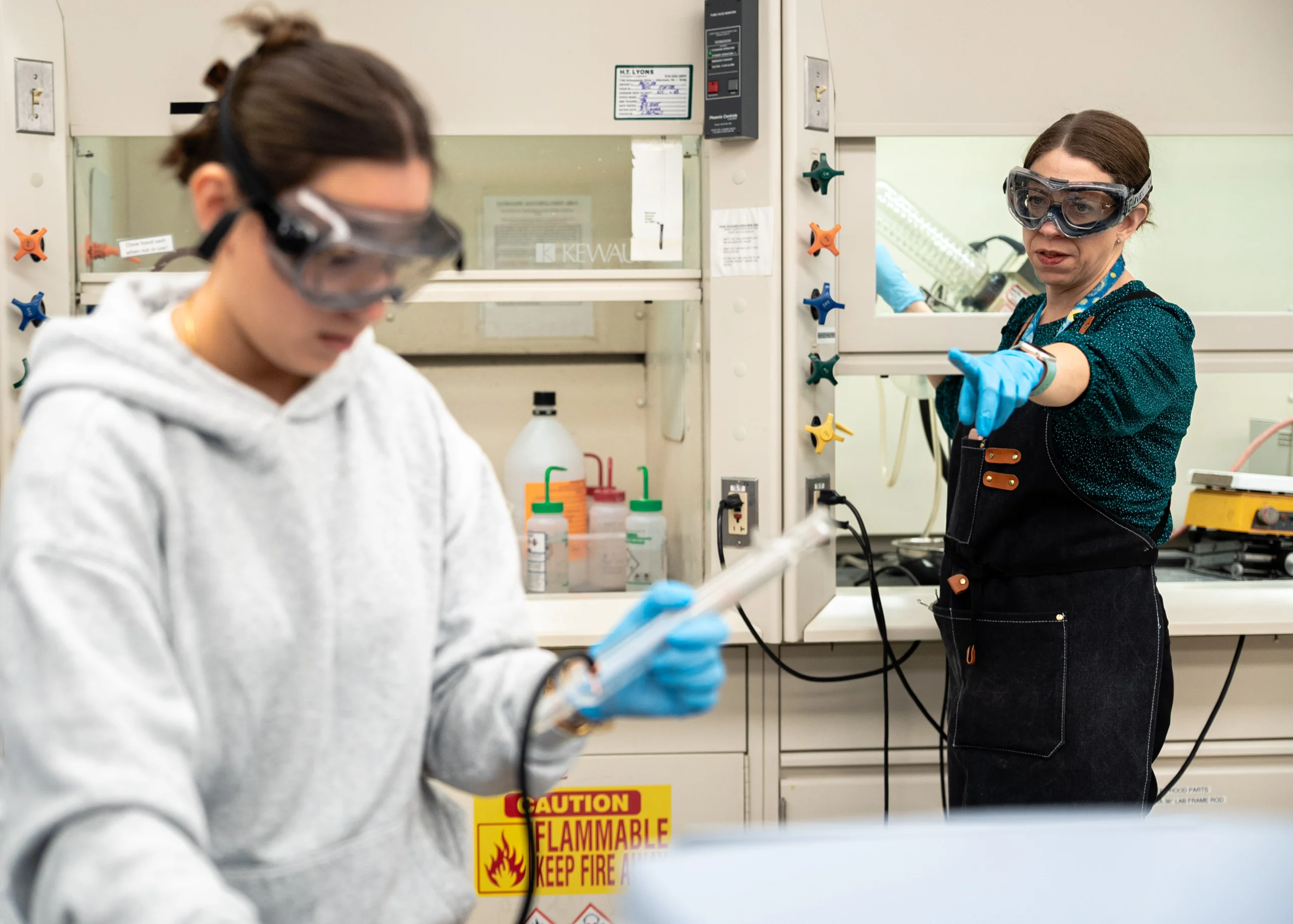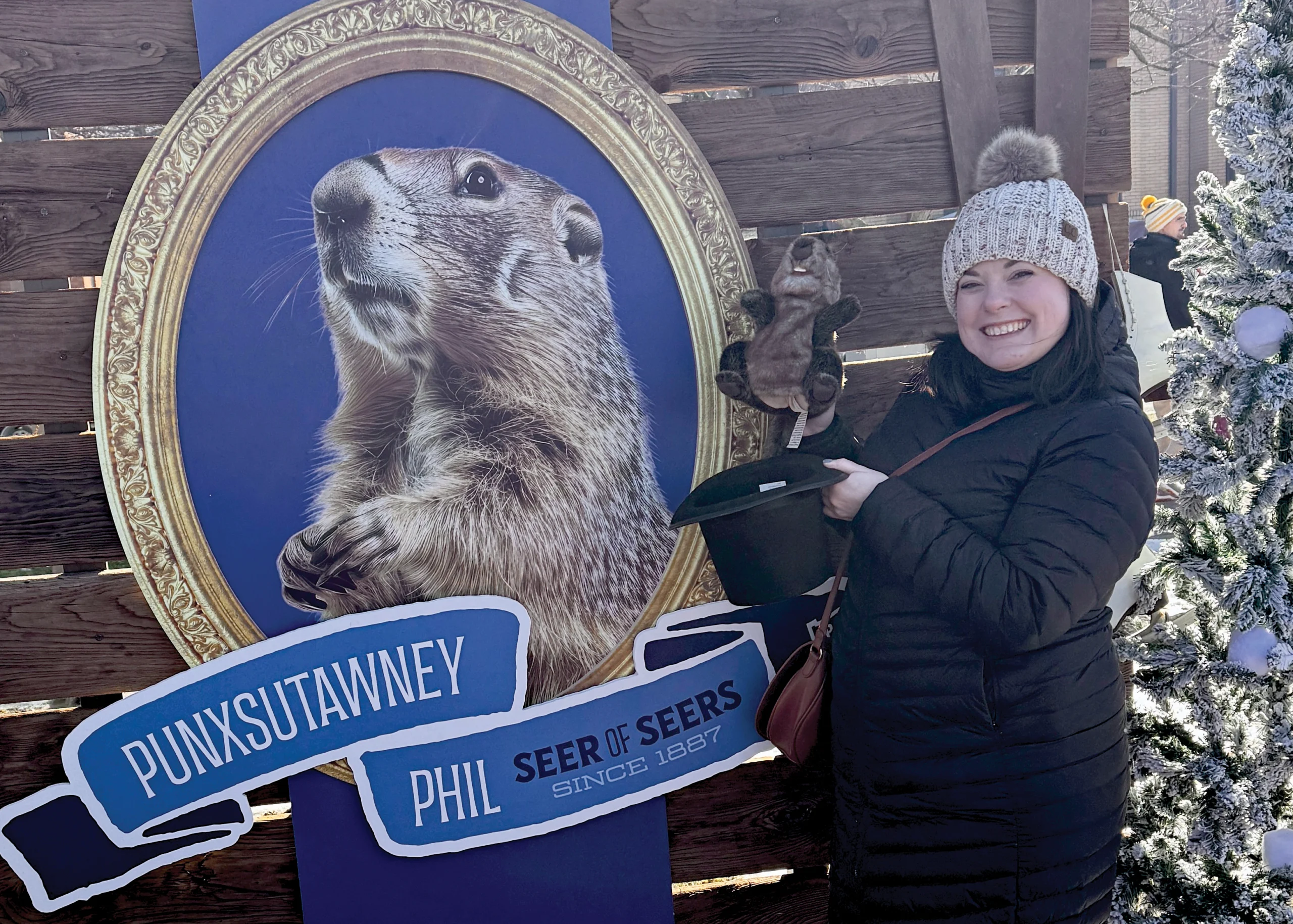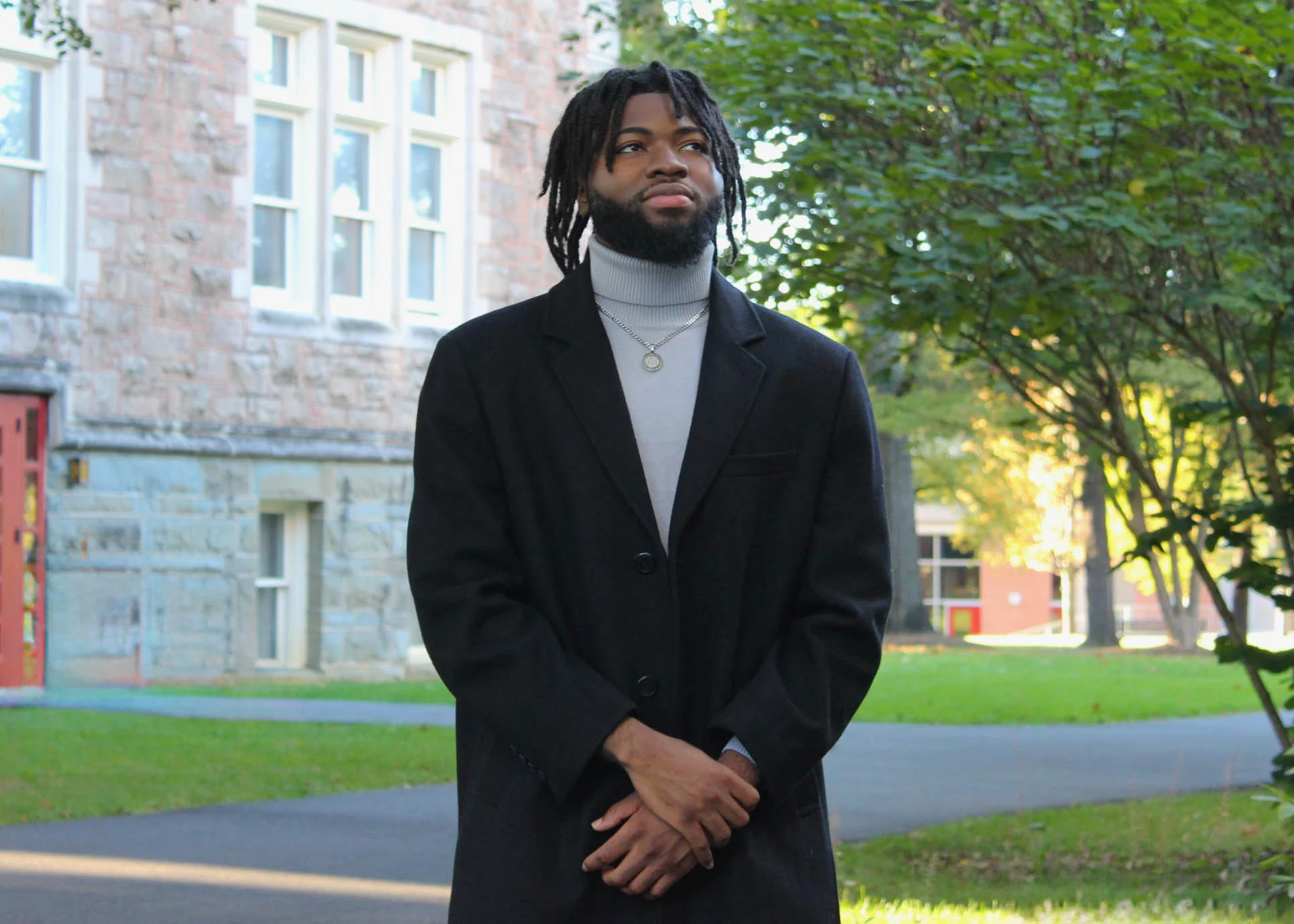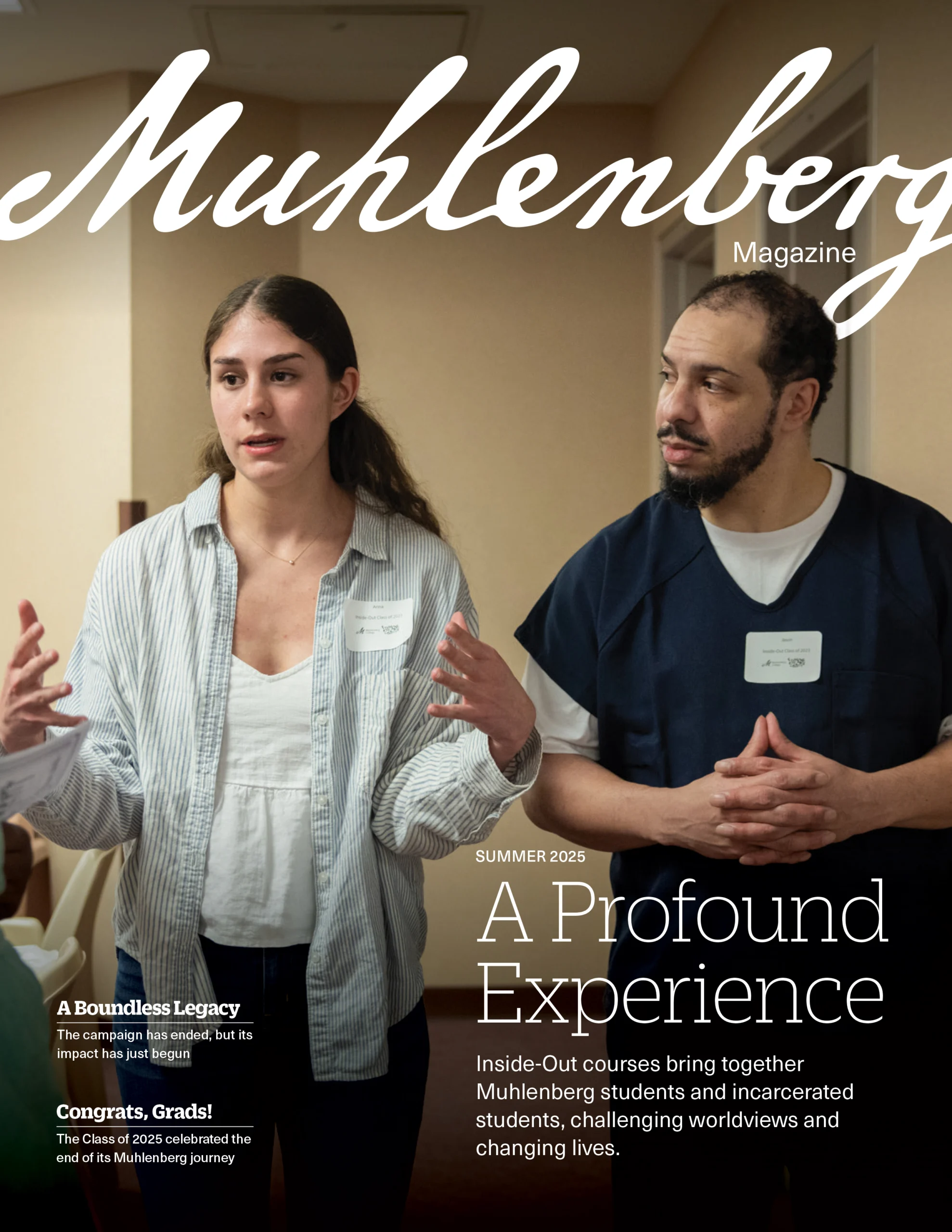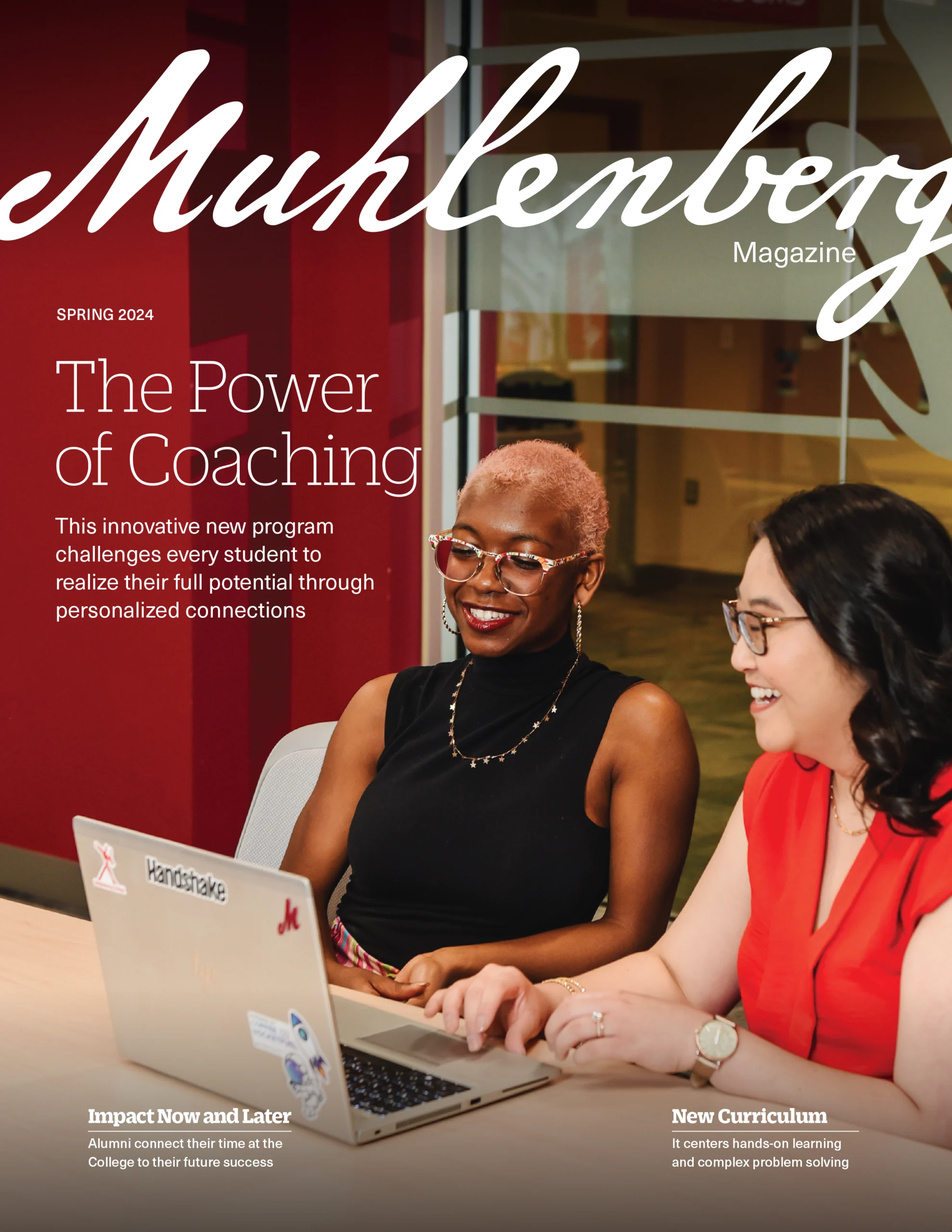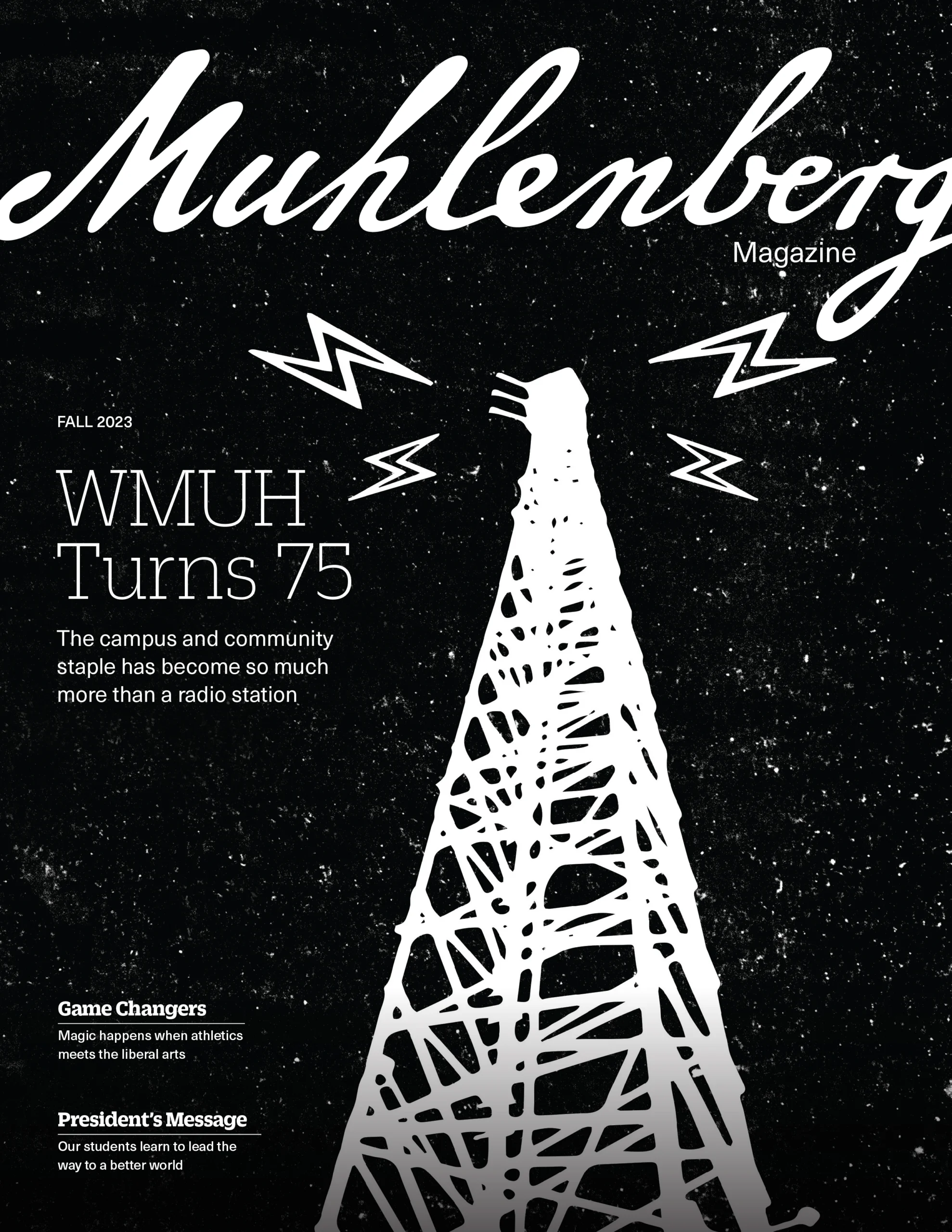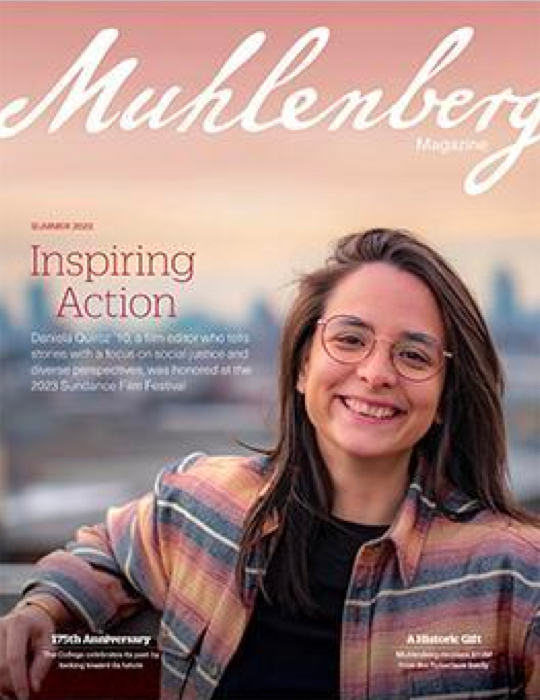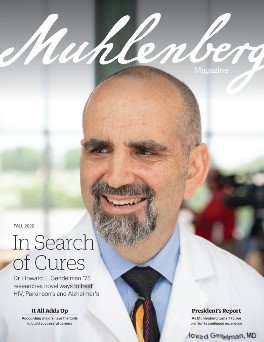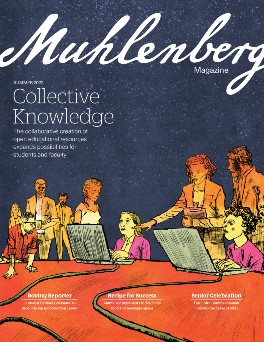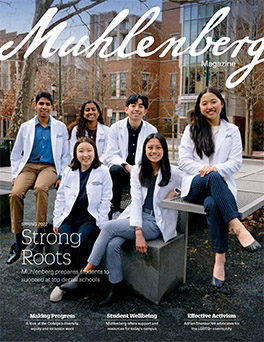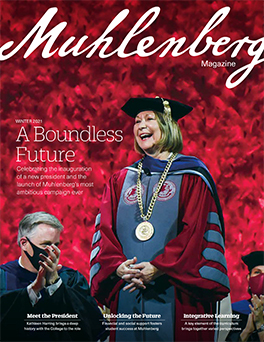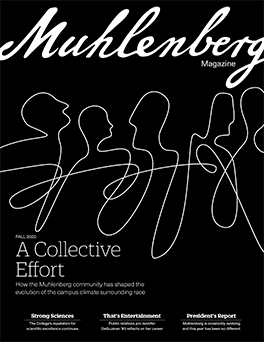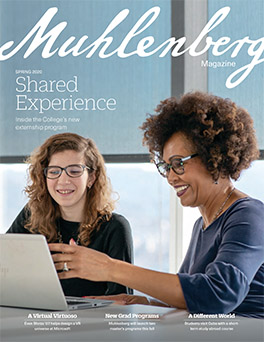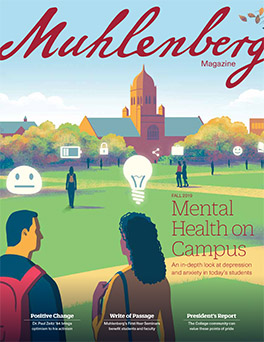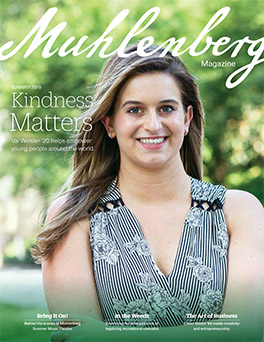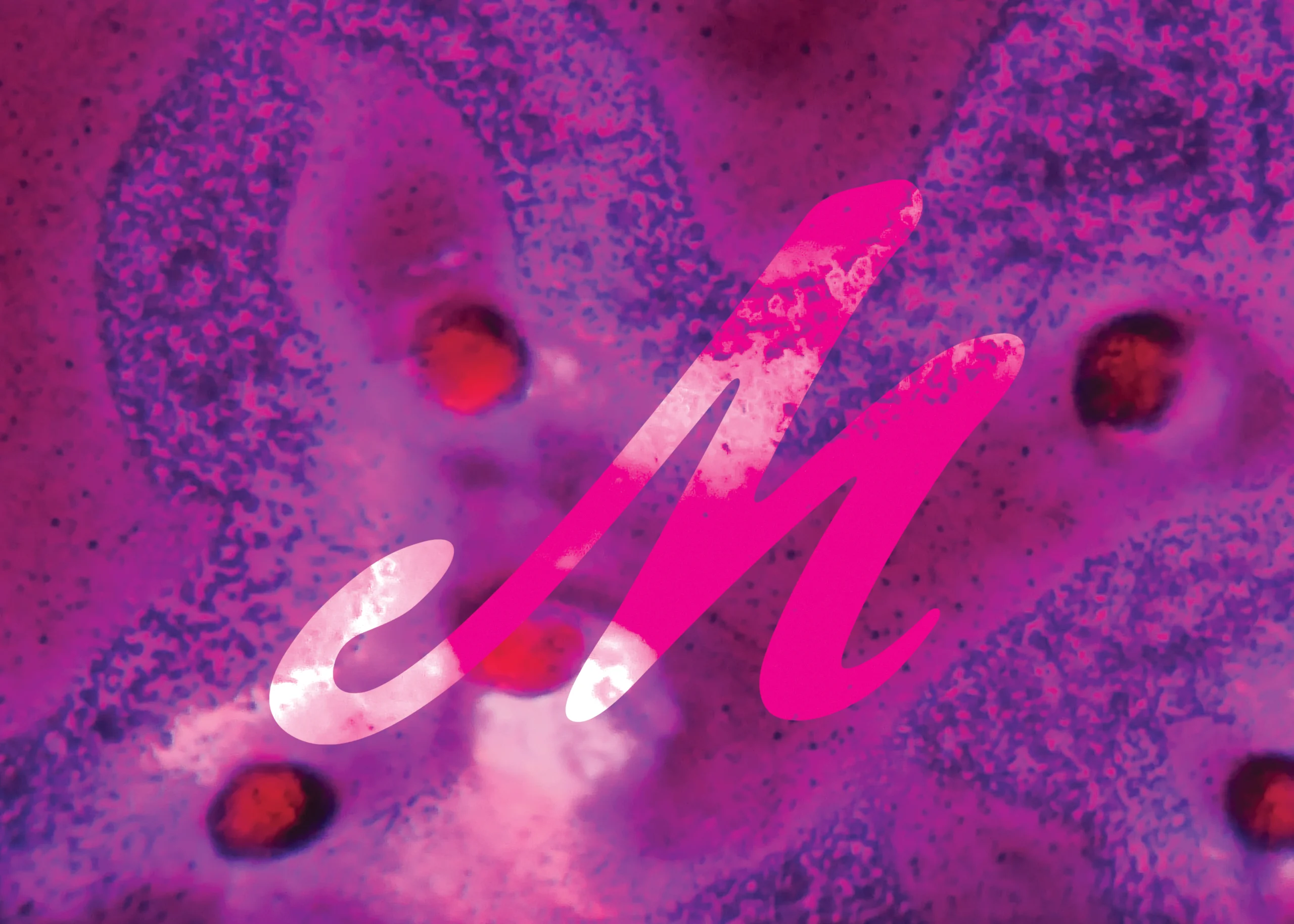Each year, about 20 to 25 percent of Muhlenberg’s graduating class will leave the College with a Bachelor of Science degree. Many of those students will have participated in Muhlenberg’s summer research program, which began in the 1950s (long before most small, liberal arts colleges offered such opportunities) and allows students to spend eight weeks fully immersed in a project. Many will have a minor or even a second major in a very different discipline like theatre, dance, music or a language. And some will be bound for medical school—over the past five years, 88 percent of all graduates who applied to medical school were admitted.
For nearly a century, Muhlenberg College has been known for the strength of its physical science programs. The College has offered a Bachelor of Science degree since the late 19th century, but it was largely John V. Shankweiler, the biology department chair from the 1930s until 1962, who helped establish the College’s reputation for excellence.
Today, among the factors that make Muhlenberg’s science programs distinctive are the aforementioned research program, which prepares students for several prestigious off-campus research opportunities as well as graduate school; the College’s state-of-the-art facilities; and, of course, curriculums rooted in the liberal arts.
“The quality of instruction is very, very high,” says Bruce Anderson, interim provost and professor of chemistry. “We are teaching first. That doesn’t mean we aren’t scholars or that we don’t do research, but that even our research is an extension of all the excellent teaching we do in the classroom.”
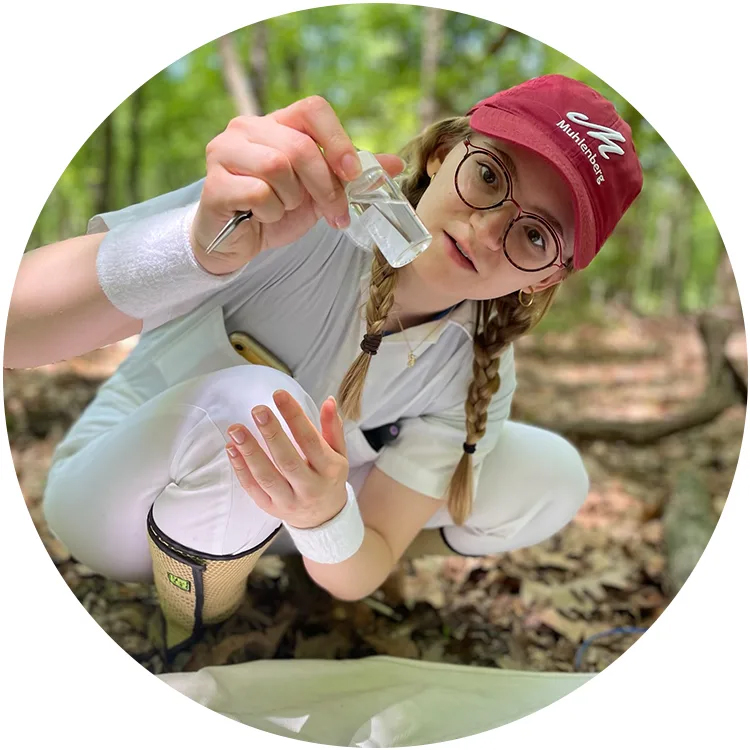
An Exemplary Education
At this point, all of Muhlenberg’s physical science curriculums are flexible enough to allow a student to double major in something completely different or to have the option to study abroad. The curriculum for biology, the largest of the science majors, was completely revamped for the 2020-2021 academic year to make entry to the major more accessible and more consistent with innovative teaching practices.
“We want to hook people on biology from the minute they arrive on campus,” says Marten Edwards, professor and chair of biology. “We’ve reconfigured our first year so it’s a hands-on experience from the get-go.”
Previously, the introductory biology lecture was the largest class on campus and it had no lab component. Now, far more biology faculty are teaching first-year students so the classes can be smaller hybrids between lecture and lab with ample opportunities to actually conduct science. The rest of the curriculum also changed to add greater flexibility, in part to better accommodate transfer students joining Muhlenberg. What hasn’t changed is the department’s commitment to rigor and its distinctive decision to teach the breadth of biology, from cell biology to ecology.
“We want to hook people on biology from the minute they arrive on campus. We’ve reconfigured our first year so it’s a hands-on experience from the get-go.”
—Marten Edwards, professor and chair of biology
The major also offers a breadth of fieldwork options. For example, Edwards’ Entomology course has a lab that takes place outdoors. Professor of Biology Erika Iyengar teaches several courses with field components; Field Marine Ecology involves travel to Maine to collect marine snails, her primary research interest. And Professor of Biology and Director of Sustainability Studies Rich Niesenbaum teaches field courses in botany as well as a long-running, short-term study abroad course with a research component in Costa Rica.
The College’s newest physical science major, neuroscience (approved by the faculty in January 2004), is the sixth most popular major on campus, and its introductory course, open to nonmajors as well, is among the most popularly enrolled courses at the College. Mind & Brain engages students with questions like: What’s the relationship between the brain and the mind? What does it mean for the mind to study itself? What is a mind, and who has one? Stanley Road Associate Professor of Neuroscience and Department Chair Jeremy Teissere says because neuroscience is a relatively new discipline, the faculty has been able to build a curriculum with fewer preconceived notions of what it should look like. The introductory course is therefore theory-centered rather than survey-based, which allows majors to determine which perspectives within the discipline they find most interesting to explore in research and coursework beyond Mind & Brain.
The College offers an exceptional level of support to students within its science programs. In chemistry and biochemistry, this happens via immediate cohort-building: In the first semester of General Chemistry, the faculty group together the students who intend to major in either discipline into a single lab section. In the second semester, those students take part in a project-based lab: The professor chooses a theme, and the students work together to conduct literature research and propose their own open-ended projects that they’ll continue throughout the semester. In physics, faculty lean on the College’s liberal arts foundation to try and demystify the discipline, creating pathways for students to better understand and engage with the major.
“I don’t think there’s anything fundamentally different about figuring things out in the sciences than in the social sciences or philosophy or religion or psychology,” says Associate Professor and Chair of Physics Adam Clark. “If a student can learn that what I want them to do is similar to what they do in some other class—one that’s not as scary to them—they’re more likely to succeed.”
Muhlenberg’s excellence has paved the way for a number of academic partnership programs. The oldest, an engineering partnership with Columbia University, allows students to earn Bachelor of Science degrees from both institutions. The College has an early assurance partnership with the Temple University School of Medicine and an early access program with the Boston University School of Medicine. And, the College offers 3-4 programs (three years of Muhlenberg, four of graduate school) with the University of Pennsylvania School of Dental Medicine and the SUNY College of Optometry.

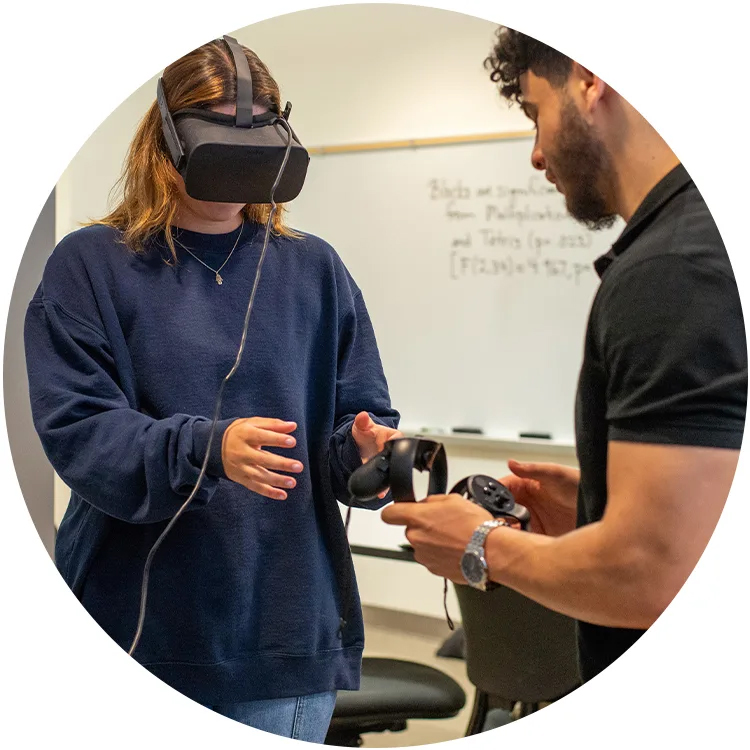
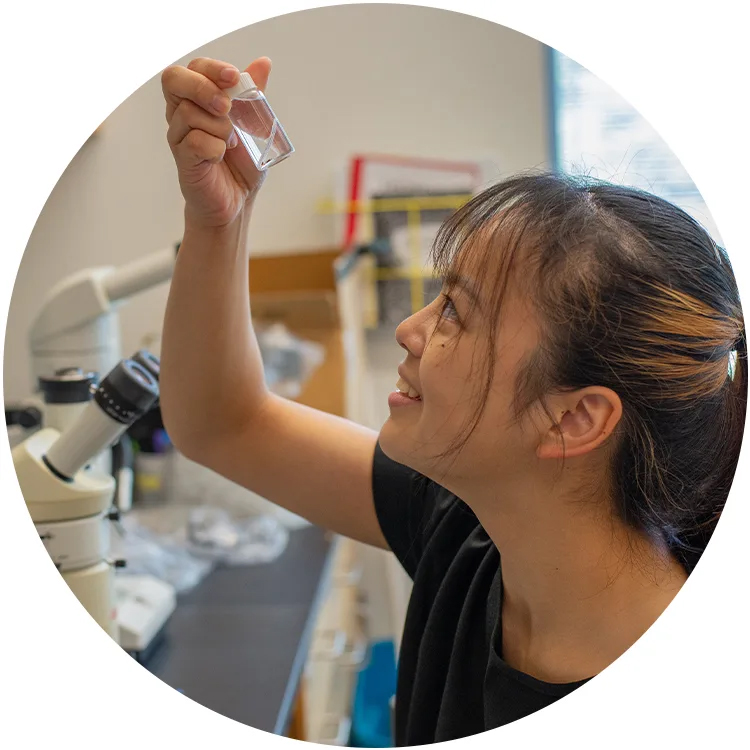
A Foundation in Research
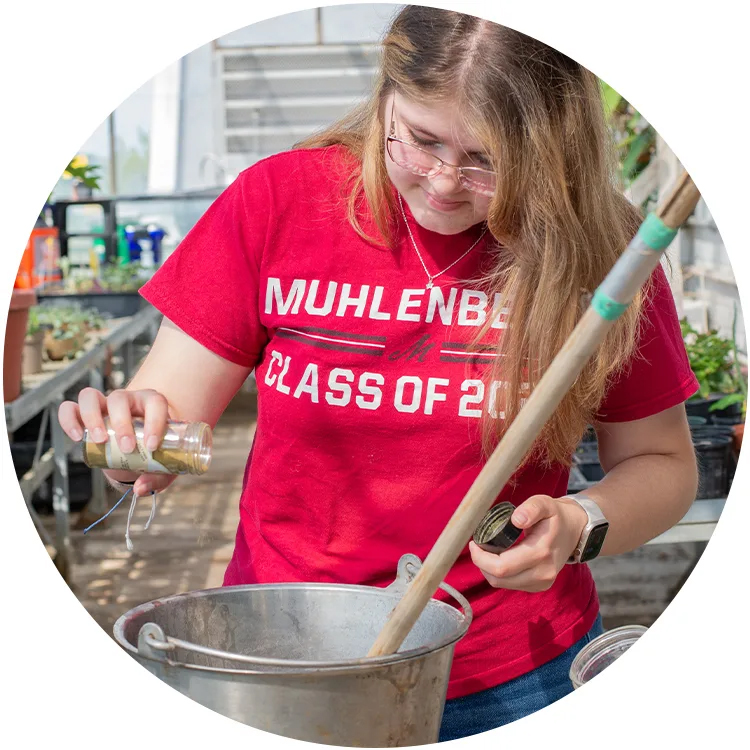
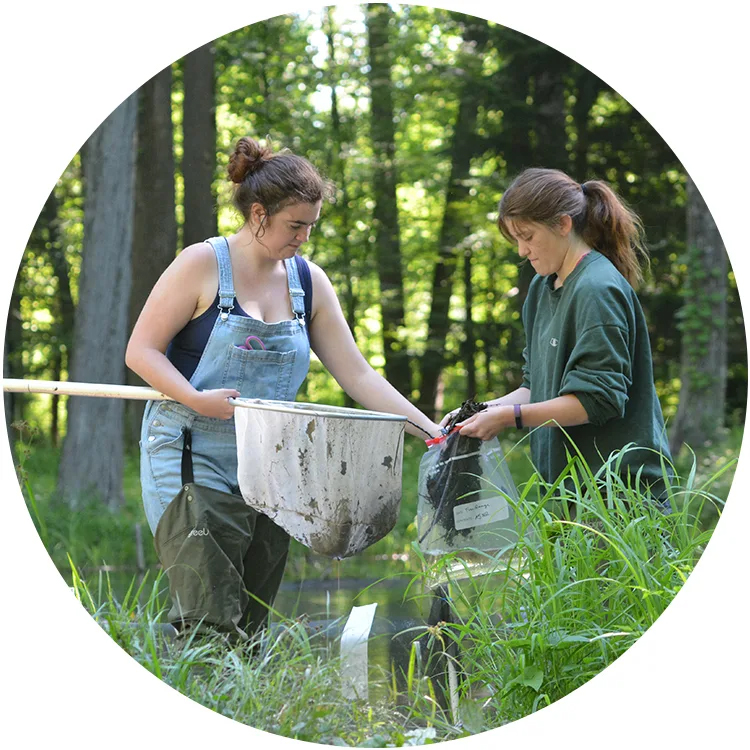
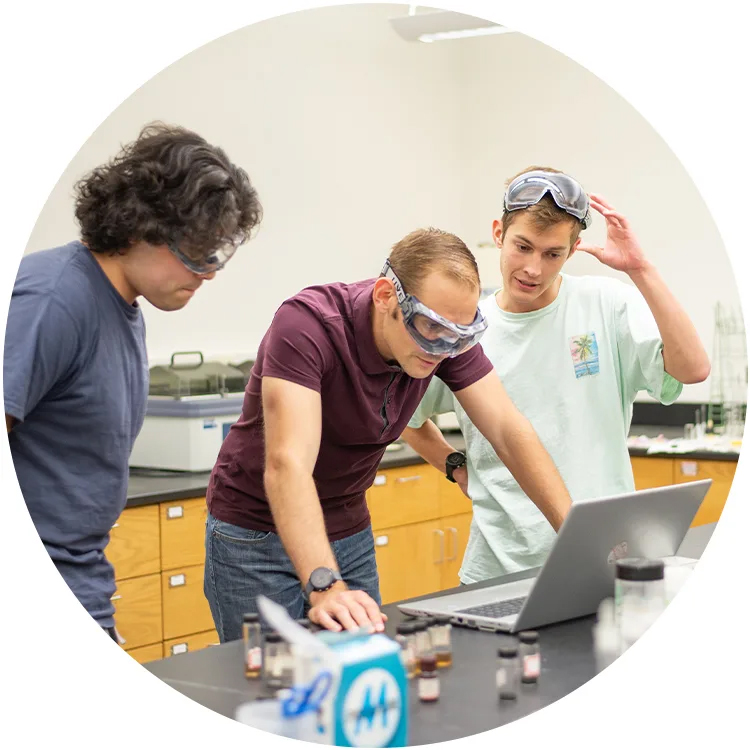
The College’s summer research program has been ongoing for more than 65 years, says Professor of Chemistry and Co-Director of Biochemistry Keri Colabroy, who coordinates the program. This has created a culture that attracts faculty who appreciate the importance of offering robust research experiences to undergraduates and students who are eager to participate.
“The people who do science at Muhlenberg understand that teaching science is the process of doing science, and doing science means not knowing the outcome,” Colabroy says. “Doing something no one’s ever done before, solving a problem, that’s what scientists want to do. There are many people in the world who think that’s not possible with undergraduates, but it’s baked into the way Muhlenberg operates.”
For eight weeks each summer, students receive a stipend along with on-campus room and board, which allows them to focus on conducting research full-time. Alumni support is a major factor in making this possible. Faculty participation is another—professors are typically on academic-year contracts, so this work demonstrates their commitment to providing mentorship and guidance to students in summer research. Faculty also understand that research is a critical part of students’ scientific education, and that it’s hard to reap the full benefits without the uninterrupted time summer provides.
“The people who do science at Muhlenberg understand that teaching science is the process of doing science, and doing science means not knowing the outcome. Doing something no one’s ever done before, solving a problem, that’s what scientists want to do. There are many people in the world who think that’s not possible with undergraduates, but it’s baked into the way Muhlenberg operates.”
—Keri Colabroy, professor of chemistry and co-director of biochemistry
In addition to learning how to “do science,” students often have the opportunity to be listed as co-authors on published research. They travel to present the research at conferences. And, students who participate in summer research after their sophomore year are well-positioned to land one of the National Science Foundation’s Research Experiences for Undergraduates (REU) opportunities through its REU Sites program. These opportunities often take place at large research universities and offer a preview of graduate school.
“Students get to be on the big campus and see what it’s all about,” Anderson says. “They can decide they love this—‘I want to go to grad school so I can spend time and dedicate myself to this’—or they might find they don’t want to do that. This kind of experience is really important to students trying to figure out the next step.”
Muhlenberg science students are able to choose from a wide variety of unique research experiences with faculty on campus. For example, Clark is a string theorist—a rarity at a small, liberal arts college. Associate Professor of Chemistry Sherri Young conducts research with medicinal implications on the synthesis of small molecules that may be able to cross the blood-brain barrier. Professor of Biology Dan Klem is an internationally recognized expert in bird-window collisions, and Associate Professor of Biology Giancarlo Cuadra studies how vaping affects the microbiome of the oral cavity. The neuroscience faculty’s labs span the breadth of the discipline, from Teissere’s research on the molecular basis of anxiety and tranquility to Associate Professor of Neuroscience Matthieu de Wit’s on rethinking the role of different brain regions—or even if the brain is regionalized in the way it has become popularly understood—in the basis of behavior and cognition. Faculty are quick to collaborate across disciplines and students are encouraged to as well—for example, neuroscience students sometimes pursue neuroscience-themed questions in chemistry or psychology faculty laboratories.
Meaningful Research Partnerships
Students also benefit from recurring summer research opportunities offered off-campus. Since 2006, Professor of Physics Brett Fadem has been part of a research collaboration called PHENIX that uses the Relativistic Heavy Ion Collider (RHIC), one of only two hadron colliders in the world, at Long Island’s Brookhaven National Laboratory. PHENIX’s membership consists mostly of large research universities. Students researching with Fadem have the opportunity to travel to Brookhaven and work on the PHENIX experiment at RHIC. The PHENIX detector requires 24-hour monitoring, one thing students help do there, during RHIC operations. Among the contributions required of undergraduates to qualify as authors on PHENIX papers is the responsibility to help with the monitoring of the PHENIX detector during RHIC runs.
Iyengar has taken individual students who are really interested in marine ecology to the University of Washington’s Friday Harbor Labs, which she describes as “one of the top marine ecology research stations in the world.” Most of the researchers there are graduate students, postdoctoral researchers and professors, and Muhlenberg students have the opportunity to work alongside them and make invaluable connections before applying to graduate programs. Plus, “living five minutes from both your laboratory and the lapping waves of the ocean is an amazing experience,” Iyengar says.
The College has an ongoing relationship with the REU Site in Chemistry at the University of Michigan: Each year, Michigan saves one of its 10 available spots (for which it gets more than 300 applications per year) for a Muhlenberg student of the College’s choosing. This relationship began thanks to Carolyn ’61 and Robert Buzzard ’62, both chemistry majors and long-time chemistry teachers, says Professor of Chemistry Christine Ingersoll. The Buzzards were visiting Ann Arbor, where they met with some of Michigan’s chemistry professors. One of those professors visited Muhlenberg for a seminar and got to know the College. The Michigan REU was relatively new at the time, and the student Muhlenberg sent in 1999 (Christopher John ’00) did amazingly well. After that, Michigan agreed to save one spot per year for a student selected by Muhlenberg’s chemistry faculty. During this 21-year partnership, a total of 21 Muhlenberg students have participated in the REU program, and 15 faculty members from the University of Michigan’s Department of Chemistry have visited Muhlenberg and given seminars on their research.
While that’s the only direct REU partnership, Colabroy says that the College’s science faculty have continued relationships with their own Ph.D. programs. Professors actively use their networks to support promising students who are interested in taking part in an REU in their field of study.
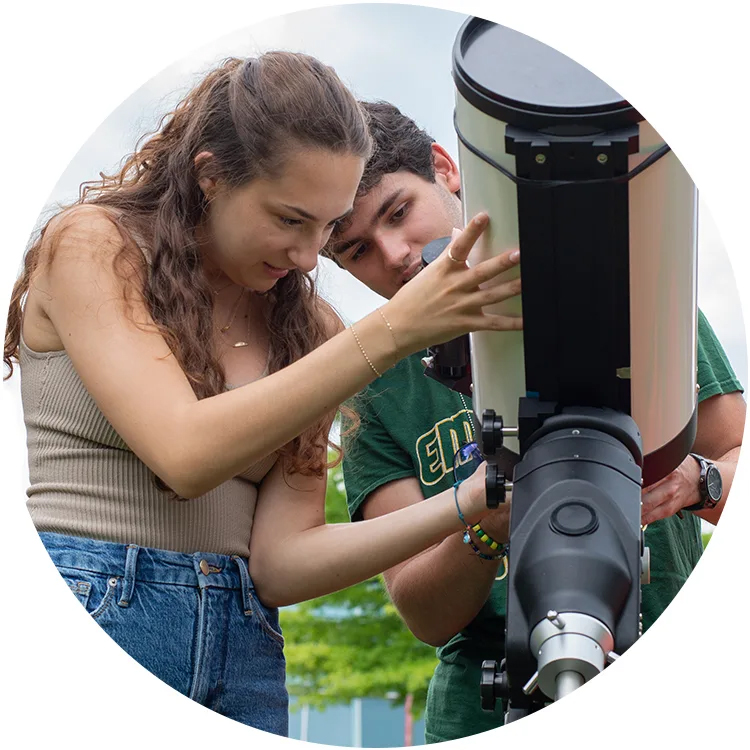
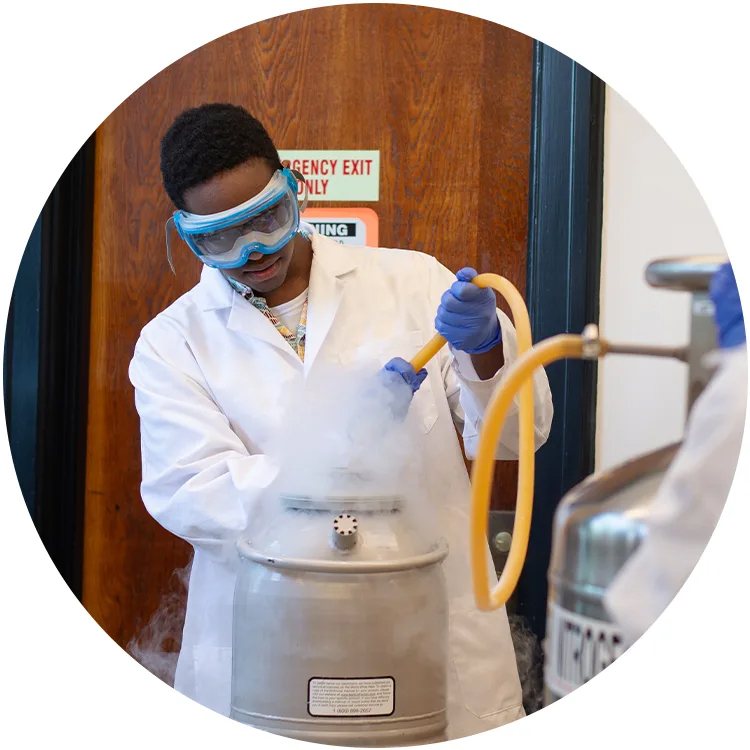
Exceptional Facilities
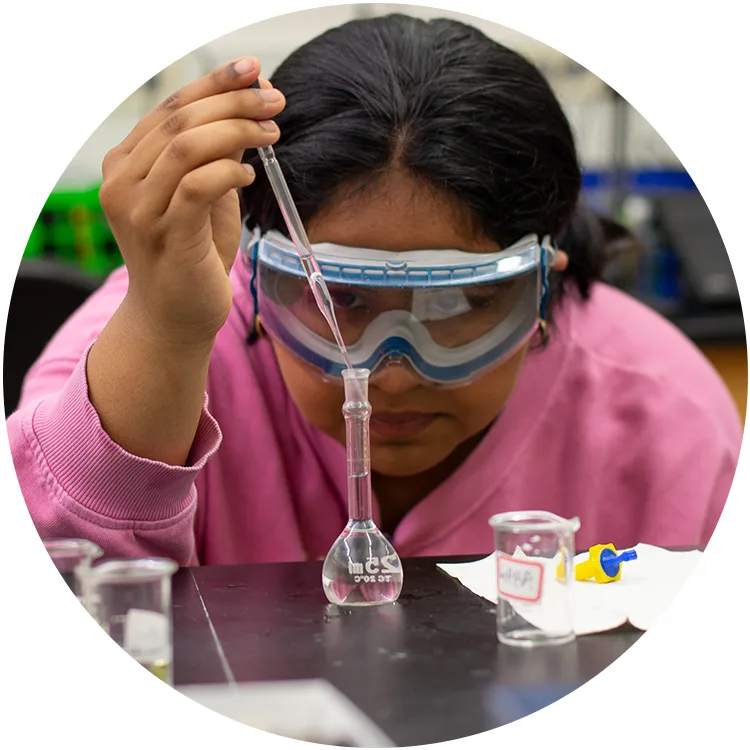
Not only does Muhlenberg foster a culture of learning through doing, it offers the tools required to conduct all kinds of science at the highest level. For example, the Department of Chemistry has purchased or received state-of-the-art instrumentation not often found at small, liberal arts colleges, Ingersoll says. Made possible through generous alumni contributions, donations from local industry and financial support from the College, these instruments include several liquid chromatography and gas chromatography instruments, mass spectrometers, liquid-handling robots and a laser lab. Chemistry students must learn how to use much of the instrumentation by junior year; students and faculty across the sciences also use some of the instrumentation for research.
The Department of Physics offers high-end TeachSpin instruments and a 3D printer as well as high-tech, low-cost custom apparatus developed on-site (such as muon telescopes, which detect the cosmic muons that bathe Earth). Assistant Professor Charles Collett is collaborating with students to develop a physics lab at 1.5 degrees above absolute zero for experiments related to quantum computing.
The Department of Biology has a state-of-the-art bird museum, the Research Museum at the Acopian Center for Ornithology, and two locations for field research: the Lee and Virginia Graver Arboretum and the Conrad W. Raker Biological Field Station and Wildlife Sanctuary. Niesenbaum manages the Muhlenberg College Herbarium, a collection of 50,000 specimens a group of students recently digitized.
Outstanding Alumni

Dr. Eric Smith ’02, Ph.D.
(neuroscience, self-designed)
laboratory principal investigator and director of translational research, immune effector cell therapies at Dana-Farber Cancer Institute in Boston
Prior to arriving at Dana-Farber earlier this year, Smith was at Memorial Sloan Kettering Cancer Center, where he specialized in multiple myeloma and cellular immunotherapy. His research focused on developing an experimental treatment that had shown promise in patients with other blood-based cancers for multiple myeloma patients. The therapy involves modifying a patient’s T cells (a part of the immune system) to recognize and destroy cancerous blood cells via a protein they express. Smith designed and evaluated how to specify this therapy for multiple myeloma, in which cancer cells do not express the protein that’s common to other blood cancers. A Phase II clinical trial of a therapy stemming from Smith’s work reported a more than 90 percent response rate in multiple myeloma patients whose cancers had stopped responding to traditional treatment. Smith’s Dana-Farber lab will continue to work toward advancing cell-mediated therapies, including expanding to improve them for solid-tumor cancers, which have proven more difficult to target than blood-based cancers. To read a longer version of Smith’s story, click here.
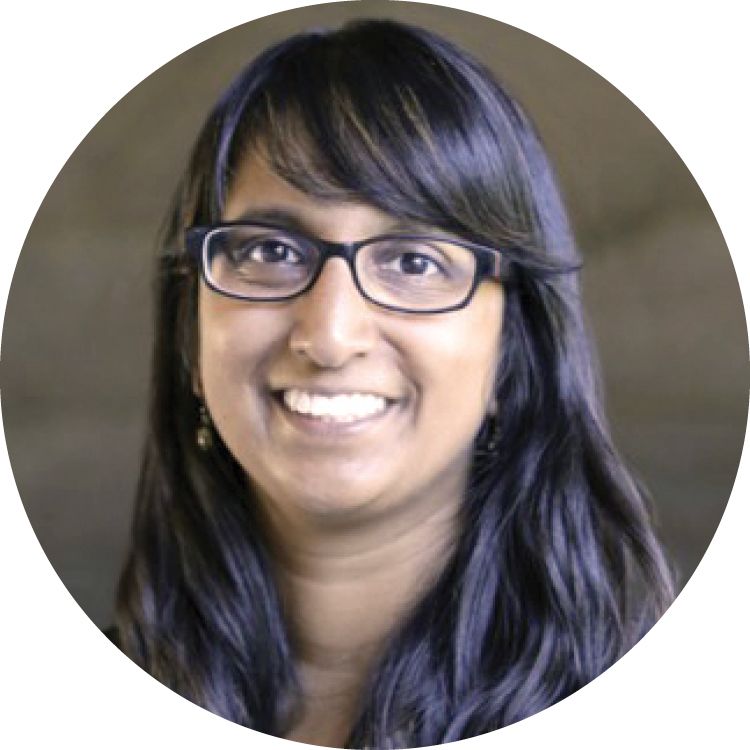
Dr. Suchi Pandey ’99
(biology)
chief medical officer at Stanford Blood Center and clinical associate professor of pathology at Stanford University in Stanford, California
After her residency, Pandey completed a fellowship in transfusion medicine, which involves collecting, storing and testing blood and consulting with physicians on transfusion patients. The combination of lab and clinical work drew her to the specialty. Since COVID-19 emerged, Pandey’s work has expanded to include facilitating the use of convalescent plasma (from patients who’ve recovered from the virus) as a potential treatment. Under Pandey’s leadership, Stanford Blood Center was one of the first in the country to collect plasma from recovered patients in early April. In spring and summer, Pandey worked with COVID-19 patients receiving convalescent plasma as part of a national expanded access program to gauge the experimental treatment’s safety. Now, Stanford is part of a clinical trial comparing the treatment against a placebo in COVID-19 patients who visit the emergency room but are not sick enough to be admitted. Pandey continues to work to collect convalescent plasma to support COVID-19 patients while simultaneously ensuring the Blood Center has adequate reserves of blood for the hospitals it serves. To read a longer version of Pandey’s story, click here.
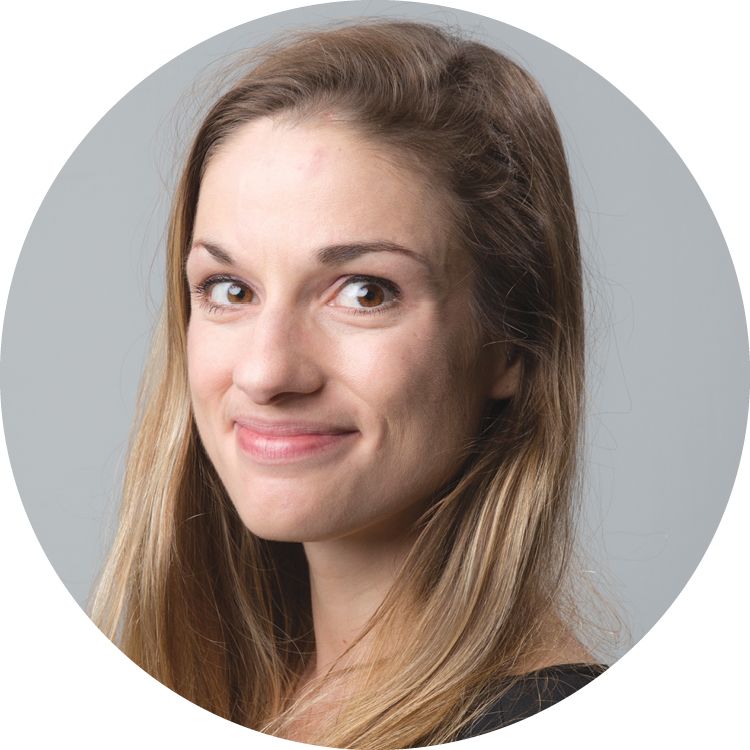
Dana Tedesco ’11, Ph.D.
(biochemistry)
scientist in clinical immunology at Amgen in San Francisco
Tedesco earned a doctorate in immunology and molecular pathogenesis from Emory University before entering the world of drug development, first via a postdoctoral fellowship at Merck Research Laboratories and now in her current role at Amgen. Today, she’s on the clinical side of the research, analyzing data from drug trials in patients, collaborating with bioanalysts and research scientists and writing regulatory documentation. She still spends some time in the lab, where her career path really began—she never considered going to graduate school before discovering how much she enjoyed conducting research under the mentorship of Professor of Biology Amy Hark.
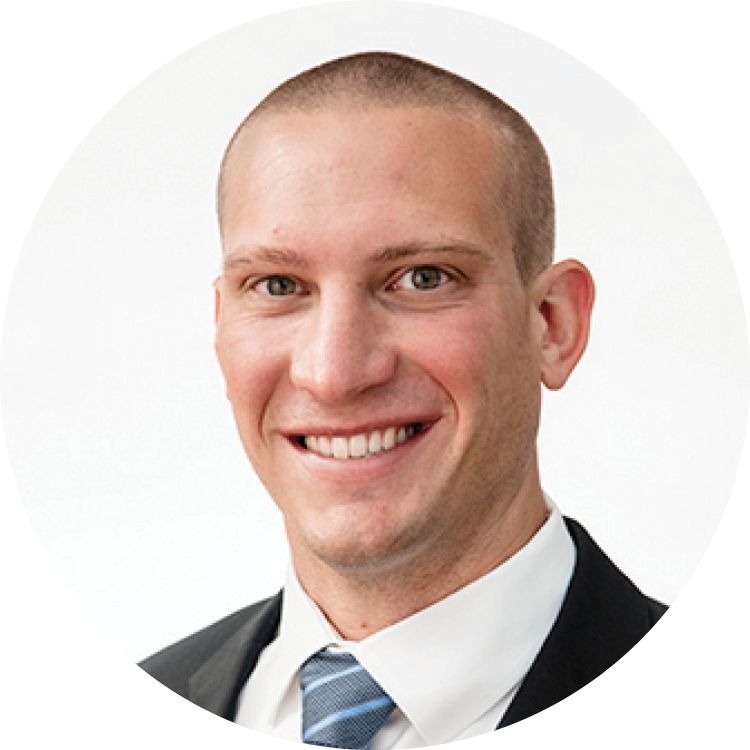
Dr. Bryan Auvil ’16
(chemistry)
internal medicine resident at Vanderbilt University Medical Center in Nashville, Tennessee
Auvil earned his Doctor of Medicine from the University of Pennsylvania this spring and pursued an internal medicine residency at Vanderbilt partially because its close-knit, friendly atmosphere reminded him of Muhlenberg. His passion for his chemistry classes was such that he considered going to graduate school, until he conducted summer research and learned it involved more time alone in a lab than he’d like. He credits the solid science education he received at Muhlenberg as well as the time-management skills he built as a student-athlete on the football team for helping him succeed in medical school.

